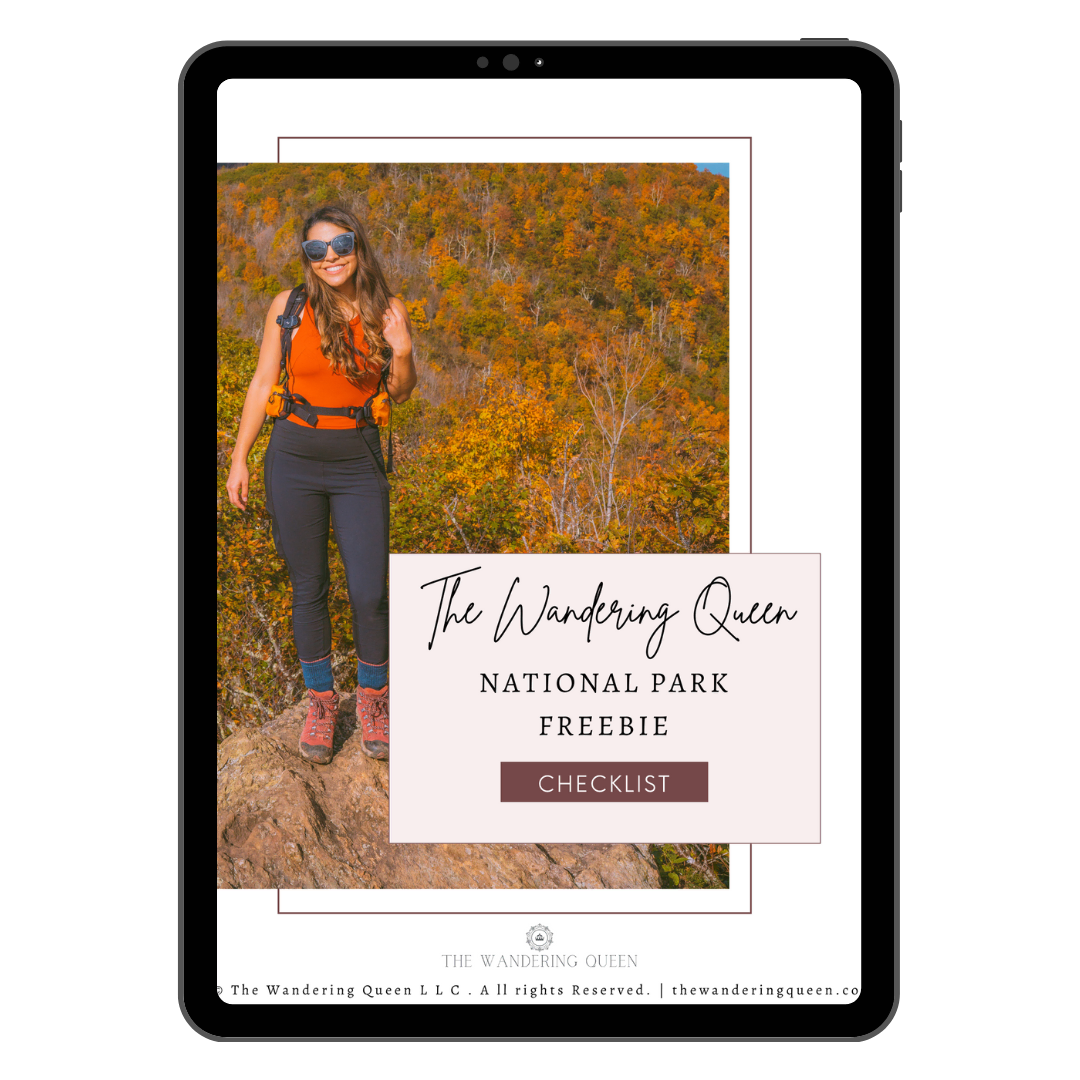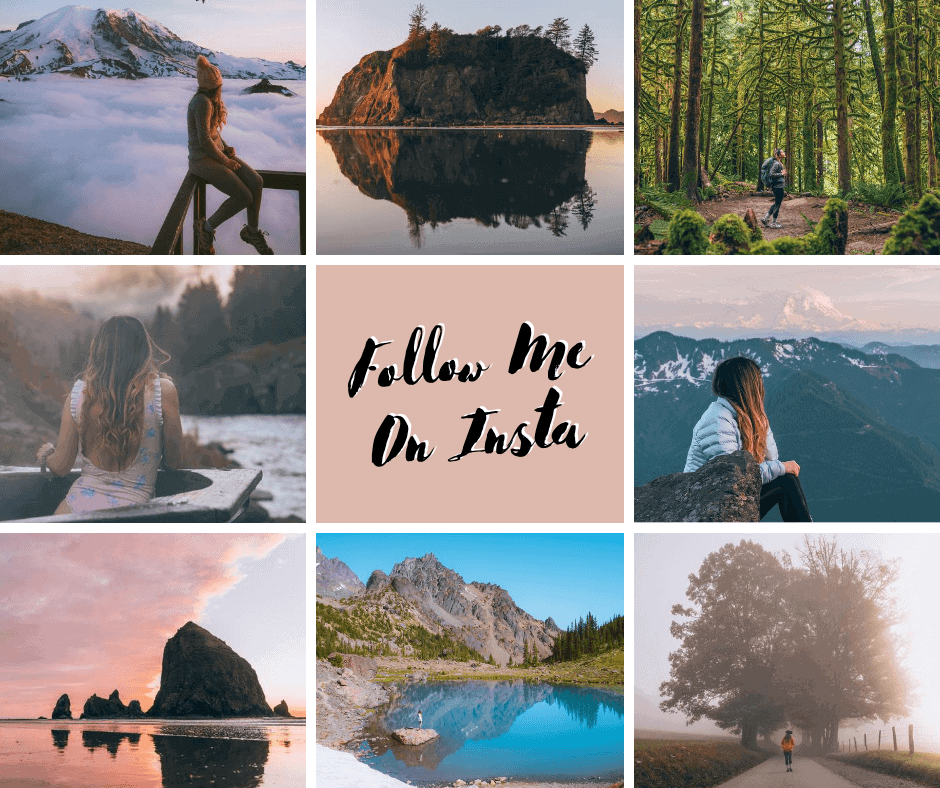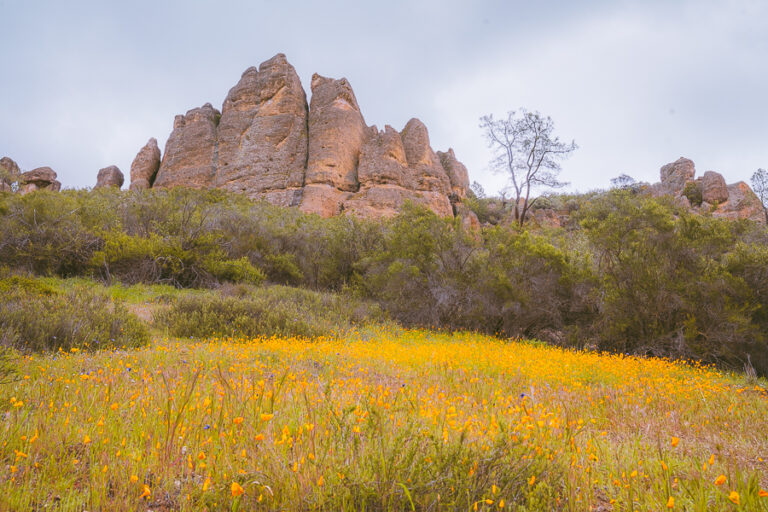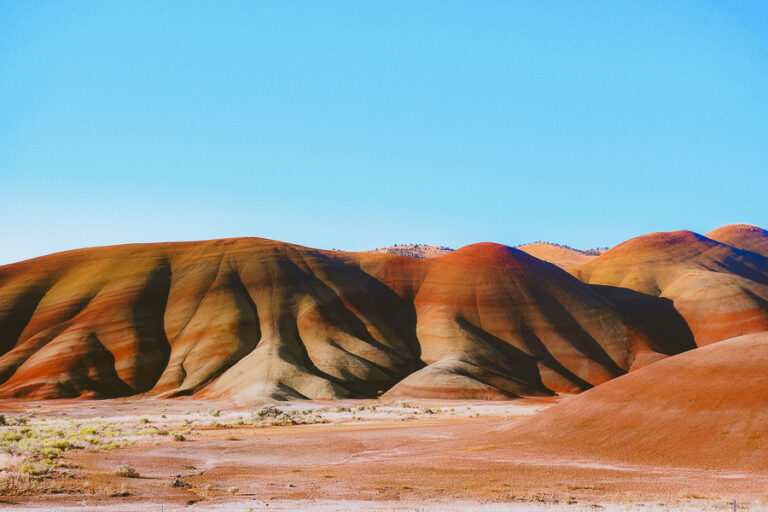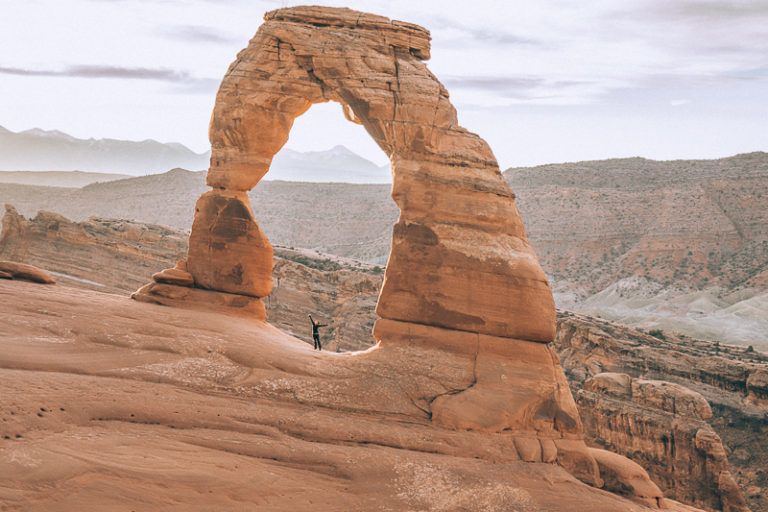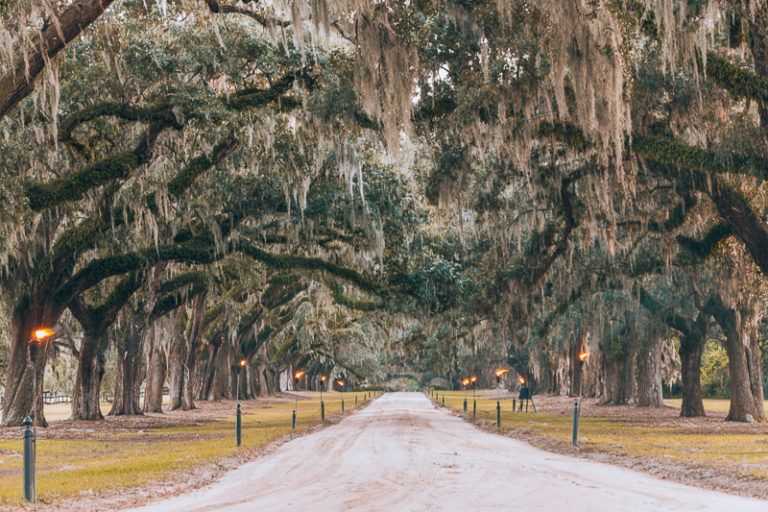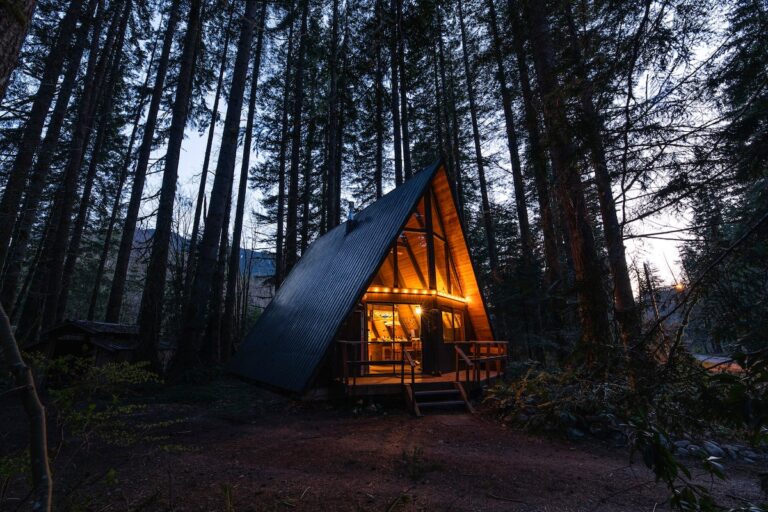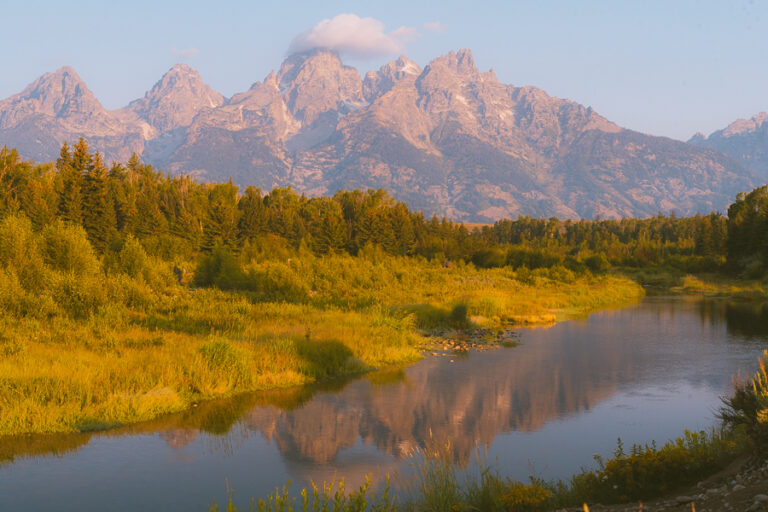The Ultimate Day Trip to Joshua Tree National Park
If you’re exploring Southern California’s vast desert landscape, a day trip to Joshua Tree National Park is just what you need. Just a short drive from Palm Springs and Los Angeles, this unique destination calls to the intrepid adventurer with its striking Joshua trees, rugged rock formations, and expansive vistas.
Are you an avid hiker, a photography enthusiast, or simply seeking a tranquil retreat from city life? Whatever you’re into, a Joshua Tree day trip has something for everyone. The park’s trails, hidden oases, and the desert’s surreal beauty are waiting to be discovered — captured by your lens.
As the day unfolds, you’ll find yourself immersed in a world where the Mojave Desert and the Colorado Desert collide, creating a habitat like no other. Ready to experience all Joshua Tree has to offer? Let’s get it!
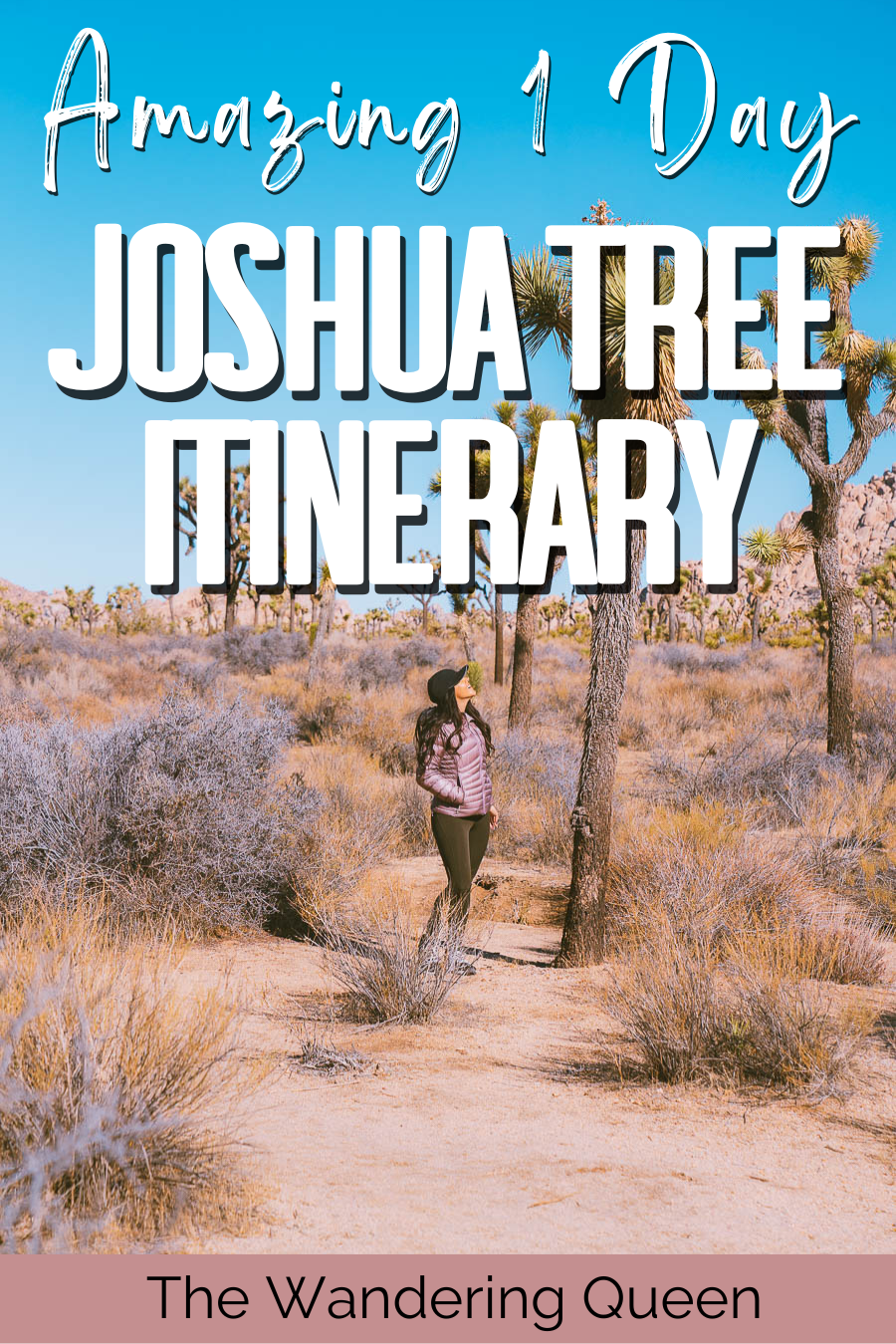
Disclosure: This post contains affiliate links. If you click one of them, I may receive a small commission (for which I am very grateful for) at no extra cost to you.
Joshua Tree National Park
Related Posts
The Ultimate Joshua Tree One-Day Itinerary
Joshua Tree National Park is an exciting place where two different desert ecosystems converge — the Mojave and Colorado. This creates an otherworldly landscape filled with unique flora, an iconic rock formation or two, and expansive views.
With so many things to do in Joshua Tree, one day might not seem like enough, but with careful planning, you can experience some of the park’s most iconic sights. This itinerary will guide you through a perfect day in Joshua Tree, from watching the sunrise over the Cholla Cactus Garden to stargazing under one of the darkest skies in California.
Watch the Sun Rise at Cholla Cactus Garden

Catching the sunrise at Cholla Cactus Garden is a must-do when visiting Joshua Tree. Imagine arriving just before dawn, with the desert still cloaked in cool, quiet darkness. As the first light peeks over the horizon, the entire garden comes alive.
The cholla cacti — nicknamed “teddy bear” cholla, though they’re anything but cuddly — start to glow with a golden hue, their spiky outlines sharp and surreal. It’s like stepping into a dreamscape. The long shadows create a dramatic effect, perfect for some stunning photos.

Plus, being out there early means you’ll have the place mostly to yourself, making it even more special. The peacefulness of the desert at sunrise is something you have to experience to truly appreciate. So, grab a warm jacket, charge your camera batteries, and set that alarm—you won’t regret starting your day with this incredible view.

Top Tip: Use time and date to help you keep track of the sunrise times for the park so you don’t miss out.
Download my free Outdoor Photography Guide
Trek Arch Rock Trail and See Heart Rock
- Mileage: 1.4 miles (out-and-back)
- Elevation Gain: 108 feet
- Difficulty: Easy
- Trail Guide: Link

Next, make your way to one of the best hikes in Joshua Tree, the Heart/Arch Rock Trail, for your first hike of the day. This short, easy trail is just a 1.4-mile round trip and offers a fantastic opportunity to explore some of Joshua Tree’s famous rock formations.
The rock formations in Joshua Tree are fascinating due to their unique origins. The granite rocks were formed millions of years ago by the cooling and solidification of magma beneath the Earth’s surface. Over time, the elements sculpted these formations into the rounded, surreal shapes you see today.

The trail winds through a desert landscape filled with Joshua trees and leads to Arch Rock, a natural arch that’s a popular photo spot. Along the way, keep an eye out for the “Heart Rock,” a boulder with a heart-shaped indentation.
Explore Skull Rock
- Mileage: 1.7 miles (loop)
- Elevation Gain: 147 feet
- Difficulty: Easy
- Trail Guide: Link

After your hike, drive to Skull Rock, one of the park’s most famous landmarks. Located right off Park Blvd, this iconic rock formation is impossible to miss.
The large granite boulder, shaped eerily like a human skull, draws visitors in with its unique appearance, complete with “eye sockets”; it was formed by years of erosion. It’s one of the park’s most photographed spots, and for good reason—the rock’s quirky, almost spooky look makes for some fun and memorable photos.
But there’s more to do here than just snapping a picture. Take a short stroll around the area, and you’ll find plenty of other interesting rock formations to explore. The terrain is relatively easy to trek, making it perfect for families or those looking for a quick, scenic stop.
The surrounding area offers plenty of Joshua trees and desert plants, adding to the unique atmosphere. Whether you’re a geology fan, photographer, or just looking to soak in more of the park’s surreal landscape, Skull Rock is a fantastic, accessible stop on your Joshua Tree adventure.

Remember: The desert can be deceivingly dry, so drink water regularly, even if you don’t feel thirsty.
Take a Lunch Break: Pack a Picnic Bag
By now, you’ll likely be ready for a lunch break. Since dining options inside the park are nonexistent, packing a picnic bag is a great idea. Find a shaded spot at one of the picnic areas, such as those near Hidden Valley or Cap Rock, and enjoy your meal surrounded by the stunning desert landscape.
Wander Through the Hall of Horrors
- Mileage: 0.6 miles (loop)
- Elevation Gain: 26 feet
- Difficulty: Easy
- Trail Guide: Link

The Hall of Horrors in Joshua Tree is a must-see for anyone looking to add a little thrill to their desert adventure. Despite its ominous name, it’s not a haunted house but rather a series of narrow rock corridors that are super fun to explore.
Imagine squeezing through tight spaces between towering rock walls, discovering hidden alcoves, and maybe even finding a spot to climb a bit higher for a better view. It’s the kind of place that gets your heart racing in the best way, especially if you’re up for a little bit of scrambling.

The Hall of Horrors is also a favorite spot for climbers, but you don’t need any gear to enjoy it. Just bring your sense of adventure and a good pair of shoes. The surrounding area is filled with unique rock formations and iconic Joshua trees, making it a great place for a leisurely hike and some epic photos.
Claim your FREE Hiking Checklist
Ready to start hiking? Grab my free hiking checklist and never forget anything at home!
Hidden Valley Nature Trail
- Mileage: 1-mile (loop)
- Elevation Gain: 118 feet
- Difficulty: Easy
- Trail Guide: Link

Next, head to the Hidden Valley Nature Trail, one of the park’s most popular hikes. This loop trail takes you through a stunning rock-enclosed valley that was once rumored to be a hideout for cattle rustlers.
It’s a relatively short hike, making it accessible to most visitors. It offers fantastic views of the park’s signature Joshua trees and various rock formations.
Hidden Valley is a great place to learn about the unusual flora and fauna of Joshua Tree. As you walk, you’ll notice the diverse plant life, including pinyon pines, junipers, and, of course, the iconic Joshua tree.
These trees are especially unique to the Mojave Desert and can live for hundreds of years. Their unusual, spiky shapes have made them a symbol of the park and a favorite subject for photographers.
Tip: Joshua Tree is a protected area, so be sure to follow Leave No Trace principles. Stay on marked trails, don’t disturb wildlife, and pack out all your trash.
Bask in the Sunset at Keys View

Catching the sunset at Keys View is the perfect way to wrap up a day in Joshua Tree. This spot is famous for its breathtaking panoramic views, and when the sun starts to dip below the horizon, it’s pure magic.
From up here, you can see for miles across the Coachella Valley, with the Salton Sea shimmering in the distance. On a clear day, you may even see all the way to Mexico.
As the sky shifts through shades of orange, pink, and purple, the desert below transforms into a beautiful tapestry of colors. It’s the kind of view that makes you want to pause, take a deep breath, and just soak it all in. If you’re into photography, this is the golden hour you’ve been waiting for, with the perfect light to capture the raw beauty of Joshua Tree.
Whether you’re with friends or family or enjoying a solo moment, Keys View at sunset is a must-see. It’s the ideal spot to reflect on your day, snap a few last photos, and appreciate the wild beauty of the desert as it transitions into the night.
End Off Your Day With Some Stargazing

As night falls, it’s time for one of the most magical experiences Joshua Tree has to offer — stargazing. The park has been designated as an International Dark Sky Park, which means it has some of the clearest and darkest night skies in the country. With little to no light pollution, the stars shine brightly, creating a mesmerizing display.
The best spots for stargazing are away from the main roads and developed areas. Consider heading to locations like Pinto Basin Road, where you’ll find wide-open spaces and unobstructed views of the sky. On a clear night, you can see the Milky Way stretching across the horizon, along with countless stars and constellations.
If you have a telescope or binoculars, bring them along for an even closer look at the night sky. An evening staring at the stars will provide an enchanting conclusion to your day trip to Joshua Tree National Park.
Extra Activities for an Extended Joshua Tree Visit
If you plan on extending your day trip or have some extra time left over, consider adding these activities to your itinerary.
Stop to See Split Rock and Face Rock
Don’t miss the chance to check out Split Rock and Face Rock in Joshua Tree. These are two of the many intriguing formations in the park that add some extra adventure to your route.
Split Rock is exactly what you think it is: a massive boulder that looks like it’s been cleanly split down the middle. It’s one of those things that cause you to do a double-take and wonder just how it happened.
A little further along, you’ll spot Face Rock. With a bit of imagination, it really does look like a giant face emerging from the desert landscape.
These quirky rock formations are part of what makes Joshua Tree so special — there’s always something new and unexpected around every corner. They’re not just cool to look at but also make for great photo ops, adding a little extra flavor to your trek from Arch Rock to Skull Rock.
See Intersection Rock
This natural rock formation is one of those spots in Joshua Tree that you can’t miss, whether you’re a rock climber or not. Nestled near Hidden Valley Campground, this massive granite formation has earned its name because it’s literally at the intersection of several popular trails.
It’s like a natural meeting point, both for climbers looking to test their skills and for visitors wanting to take a peek at some epic views. If you’re into climbing, Intersection Rock is a dream come true, offering routes that cater to both beginners and seasoned pros.
Even if you’re just there to watch, it’s pretty mesmerizing to see climbers scaling the rock face. The texture and sheer size of the rock are impressive up close, and the views from the base are nothing short of spectacular.
Hike the Trail to Barker Dam
- Mileage: 1.3 miles (loop)
- Elevation Gain: 59 feet
- Difficulty: Easy
- Trail Guide: Link

A one-day Joshua Tree itinerary isn’t complete without a stop at Barker Dam. Barker Dam offers a tranquil oasis in the middle of the desert. This spot is a historic site built by early cattle ranchers to store water, and it’s a fantastic place to slow down and take in the quieter side of Joshua Tree.

The hike to Barker Dam is an easy, scenic loop, perfect for stretching your legs after the more intense Hall of Horrors. Along the trail, you’ll see not only the dam but also some fascinating petroglyphs and, if you’re lucky, a bit of wildlife — especially birds that are drawn to the water.

The dam itself is often surrounded by stunning reflections of the rocks and trees, making it a great spot for photos. It’s a great place to catch your breath, enjoy the serene desert landscape, and reflect on the incredible mix of history and natural beauty that makes Joshua Tree so unique.
Climb Ryan Mountain
- Mileage: 2.9 miles (out-and-back)
- Elevation Gain: 1,062 feet
- Difficulty: Moderate
- Trail Guide: Link

After soaking in the peaceful vibes at Barker Dam, it’s time to amp things up with a climb up Ryan Mountain. This hike is a bit more challenging, but the breathtaking panoramic views from the summit are well worth the effort. On a clear day, you can see for miles, including landmarks like San Gorgonio Mountain and the Salton Sea.
The trail is about three miles round trip, with a steady ascent that will get your heart pumping. Along the way, you’ll be treated to incredible vistas of the signature Joshua Tree terrain. Think endless stretches of desert dotted with Joshua trees, rugged rock formations, and distant mountain ranges.
As you climb higher, the views just keep getting better. Once you reach the summit, at 5,457 feet above sea level, you’ll be rewarded with 360-degree views of the entire park. It’s the perfect spot to take a break, snap some photos, and just soak in the sheer vastness of the desert.
After conquering Ryan Mountain, you’ll be ready for the more leisurely Hidden Valley Trail, where you can explore another side of Joshua Tree’s diverse landscape.
Make a Stop at Joshua Tree Visitor Center

After the serene experience at Cholla Cactus Garden, head to the Joshua Tree Visitor Center. Located just outside the North Entrance in the town of Joshua Tree, this visitor center is packed with everything you need to make the most of your adventure. Whether you’re a first-time visitor or a seasoned explorer, stopping here is a great idea.
Inside, you’ll find helpful park rangers ready to offer advice on the best trails, current conditions, and any must-see spots. You can get maps and guidebooks and even get some tips on where to catch the perfect sunrise or sunset (don’t worry, I’ve got the inside scoop on this).
The visitor center also has fascinating exhibits that give you a quick crash course on the park’s unique geology, wildlife, and history.
If you’re looking for a souvenir, the gift shop has you covered with Joshua Tree-themed goodies, from T-shirts and hats to local art and eco-friendly products. Plus, you can stock up on essentials like sunscreen, snacks, and extra water—things you definitely don’t want to forget in the desert.
So, before you head into the wild, make a quick stop at the Joshua Tree Visitor Center. It’s the perfect place to get oriented and ensure your day is as smooth as possible.
How to Get to Joshua Tree National Park
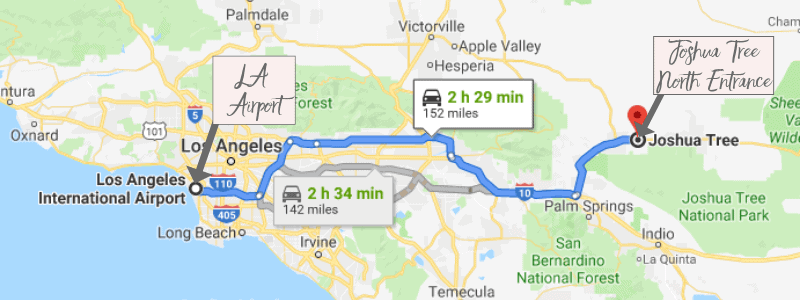
Getting to Joshua Tree is easy, with a few options depending on where you’re coming from. If you’re flying in, the closest airport is Palm Springs International (PSP), just 45 minutes away. From there, rent a car and take CA-62 north, leading you directly to the park’s West Entrance.

Note: Renting a car is essential if you’re flying in, as the park is huge and public transport is limited.
Coming from Los Angeles? It’s about a two and a half hour drive. Take I-10 East, then merge onto CA-62. You’ll pass through the towns of Yucca Valley and Joshua Tree before reaching the West Entrance.
San Diego is a bit farther, around two and a half hours. You’ll head north on I-15, then east on I-10, and finally connect to CA-62. This route also takes you to the West Entrance.
Whether you’re coming from the city or the airport, the road to Joshua Tree is straightforward and scenic, making the journey part of the adventure.

Top Tip: If you’ve had a long drive from LA or San Diego, consider spending the night at Twentynine Palms. Also remember to fill up your car at the West Entrance station as there aren’t loads of amenities in the park.
Best Time to Go to Joshua Tree National Park

Deciding on the best time to visit Joshua Tree depends on what you’re looking for in your desert adventure.
Spring (March to May) is arguably the best season, with pleasant temperatures ranging from the 70s to the low 80s. The desert comes alive with blooming wildflowers among the Joshua trees, making it ideal for hiking and photography.
Fall (October to November) is another great option. The cooler temperatures are lovely for exploring the park’s unique rock formations or enjoying a sunset at Keys View. It’s a great time for rock climbing, as the weather is just right for some outdoor activities.
Summer (June to September) is the least popular due to the extreme heat, often soaring above 100°F. Nighttime is magical, though—perfect for stargazing under some of the darkest skies in Southern California.
Winter (December to February) offers cooler days and chilly nights, but it’s a peaceful time to visit. You might even catch a dusting of snow on the higher peaks, so don’t forget your camera gear.
Read More: Best Time To Visit Joshua Tree National Park
What to Pack for One Day in Joshua Tree

Before you head out, it’s essential to pack wisely. Hiking in the desert can be harsh, so bring plenty of water — at least one gallon per person is recommended. Pack sunscreen, a wide-brimmed hat, sunglasses, and lightweight, breathable clothing to protect yourself from the sun.
Comfortable hiking shoes are a must, as you’ll be exploring various trails throughout the day. Don’t forget high-energy snacks, a packed lunch, and a full tank of gas, as services are limited within the park.
new on the shop
The Ultimate Camping Trip Planner!
Our camping trip planner helps you stay organized and plan all aspects of your adventure so that you can conquer new territories with ease.
Where to Stay When Visiting Joshua Tree
You’ll need a place to put your feet up after your day in Joshua tree. There aren’t any hotels or lodges in the park, so unless you plan on camping, the surrounding towns will provide you with the best places to stay near Joshua Tree National Park.
Budget | Best Western Plus Desert View Inn & Suites
The Best Western Plus Desert View Inn & Suites offers comfortable and modern accommodations just off I-10, making it a convenient base for exploring the Coachella Valley.
The hotel features spacious suites, an outdoor pool, a fitness center, and complimentary breakfast to start your day in the best way. It’s close to Joshua Tree National Park and Palm Springs, with plenty of dining options nearby.
A welcome haven for families, road trippers, and business travelers, this hotel provides all the essentials for a relaxing stay, plus easy access to the desert’s best sights. If you’re looking for convenience, comfort, and great value in a prime location, Best Western is for you. >>>Check rates and availability
Mid-range | Holiday Inn Express & Suites Palm Desert
The Holiday Inn Express & Suites Palm Desert – Millennium is a conveniently comfortable choice for travelers heading through the Coachella Valley. Located just a little over 30 minutes from Joshua Tree National Park, this hotel offers modern amenities, including a pool, fitness center, and complimentary breakfast.
The rooms are generous and airy, perfect for families, couples, or solo travelers. With its central location, you’re close to dining, shopping, and popular attractions like the El Paseo shopping district.
This hotel provides a great spot to rest and recover with all the essentials to ensure a pleasant and hassle-free stay. >>>Check rates and availability
Luxury | Sands Hotel and Spa
The Sands Hotel and Spa in Indian Wells is a chic, boutique oasis in the heart of the desert. This stylish property features elegant rooms, a serene pool, and a luxurious spa offering personalized treatments.
The on-site restaurant, The Pink Cabana, serves delicious Mediterranean-inspired cuisine in a glamorous setting. Located near top golf courses and upscale shopping, it’s a perfect getaway for couples, design lovers, and anyone seeking a sophisticated retreat.
A stay here is ideal for an intimate, Instagram-worthy atmosphere and impeccable service. This hotel is a great escape after your day in Joshua Tree or just a relaxing weekend in the Valley. >>>Check rates and availability
Read More: Where to Stay in Joshua Tree | 8 Stunning Places to Stay
Camping | Joshua Tree and Surrounds

Camping in and near Joshua Tree National Park is a fantastic way to fully immerse yourself in the desert’s rugged beauty. No matter where you camp, you’re never far from an iconic Joshua tree or two and some pretty epic hiking trails, making it a perfect spot for stargazing and outdoor adventures.
Inside the park, Hidden Valley Campground and Jumbo Rocks Campground are two of the most popular options. Both offer stunning natural rock formations and are perfect for tent camping and smaller vehicles. Black Rock and Cottonwood Campgrounds are great options for RVs, with facilities like restrooms, potable water, and a picnic area with convenient tables.
Just outside the park, Joshua Tree Lake RV & Campground is a solid choice, offering more amenities and spacious sites for larger RVs. >>>Check rates and availability

Tip: Keep in mind that during fire season, there may be fire bans, so always check current regulations.
Glamping | The Kosmic Tortoise
Looking for the perfect spot for glamping in Joshua Tree? The Kosmic Tortoise in Twentynine Palms is a funky, laid-back retreat just 20 minutes from Joshua Tree’s North Entrance. This charming property features cozy, art-filled rooms, a shared kitchen, and an outdoor patio perfect for stargazing.
With its unique desert vibe, it’s an ideal stay for creative souls, solo travelers, or couples seeking something offbeat. Nearby, you’ll find local dining gems, including cozy cafes and the tasty Mexican spot Edchadas.
Stay here for its cool, artistic atmosphere and easy access to the park—perfect for those looking to immerse themselves in Joshua Tree’s natural and cultural beauty. >>>Check rates and availability
Join my Newsletter to receive my free Backpacking Checklist!
Subscribe to have posts delivered straight to your inbox!! PLUS, get my FREE backpacking checklist!
FAQs About Visiting Joshua Tree National Park
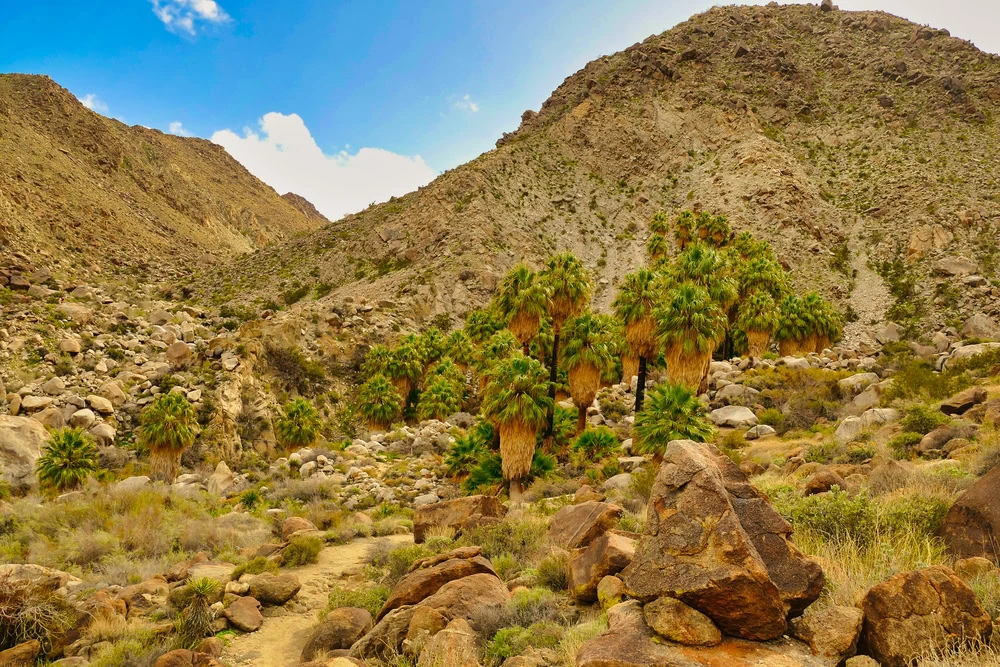
If you still have some thoughts about your Joshua Tree day trip, these commonly asked questions and their answers should put your mind at ease.
How Many Days Do You Need in Joshua Tree?
A complete day trip is perfect for experiencing Joshua Tree’s highlights, but if you want to explore more trails, do some rock climbing, or stargaze, two to three days are ideal. This gives you time to enjoy the park’s diverse landscapes at a relaxed pace without feeling rushed.
Is Joshua Tree National Park Accessible for All Visitors?
Joshua Tree offers several accessible facilities, including visitor centers, picnic areas, and some trails like the Oasis of Mara. While the rugged terrain can be challenging, the park has made efforts to accommodate all visitors. Check the park’s website for detailed accessibility information before your trip.
Is There Cell Service in Joshua Tree National Park?
Cell service can be spotty in Joshua Tree National Park, especially in remote areas. Don’t rely on your phone for navigation or emergencies. It’s a good idea to download maps off Google Maps ahead of time or carry a physical map. Always let someone know your plans before heading into the park.
Are Pets Allowed in Joshua Tree National Park?
Yes, pets are allowed, but with restrictions. They must be on a leash at all times and are only permitted in developed areas, like campgrounds and picnic spots. Pets aren’t allowed on hiking trails, so it’s best to plan accordingly if you’re bringing your furry friend.
Wrapping Up Your Joshua Tree Day Trip

There you have it, a jam-packed one-day Joshua Tree itinerary. A day in Joshua Tree National Park is an adventure filled with breathtaking landscapes, unique rock formations, and a deep sense of tranquility.
Whether you’re hiking among the iconic Joshua trees, climbing boulders, or simply enjoying the vast desert views, the park offers something for everyone. With careful planning and an early-bird start, you can experience the best of Joshua Tree in just one day, creating memories that will last a lifetime.
Remember, while one day gives you a lasting taste of what Joshua Tree has to offer, there’s always more to explore. So, if you find yourself captivated by the park’s rugged beauty, consider returning for a longer visit to dive even deeper into this desert wonderland.
Read next: Ready for your next adventure? This 3-day Death Valley itinerary is the perfect next stop on your bucket list.

